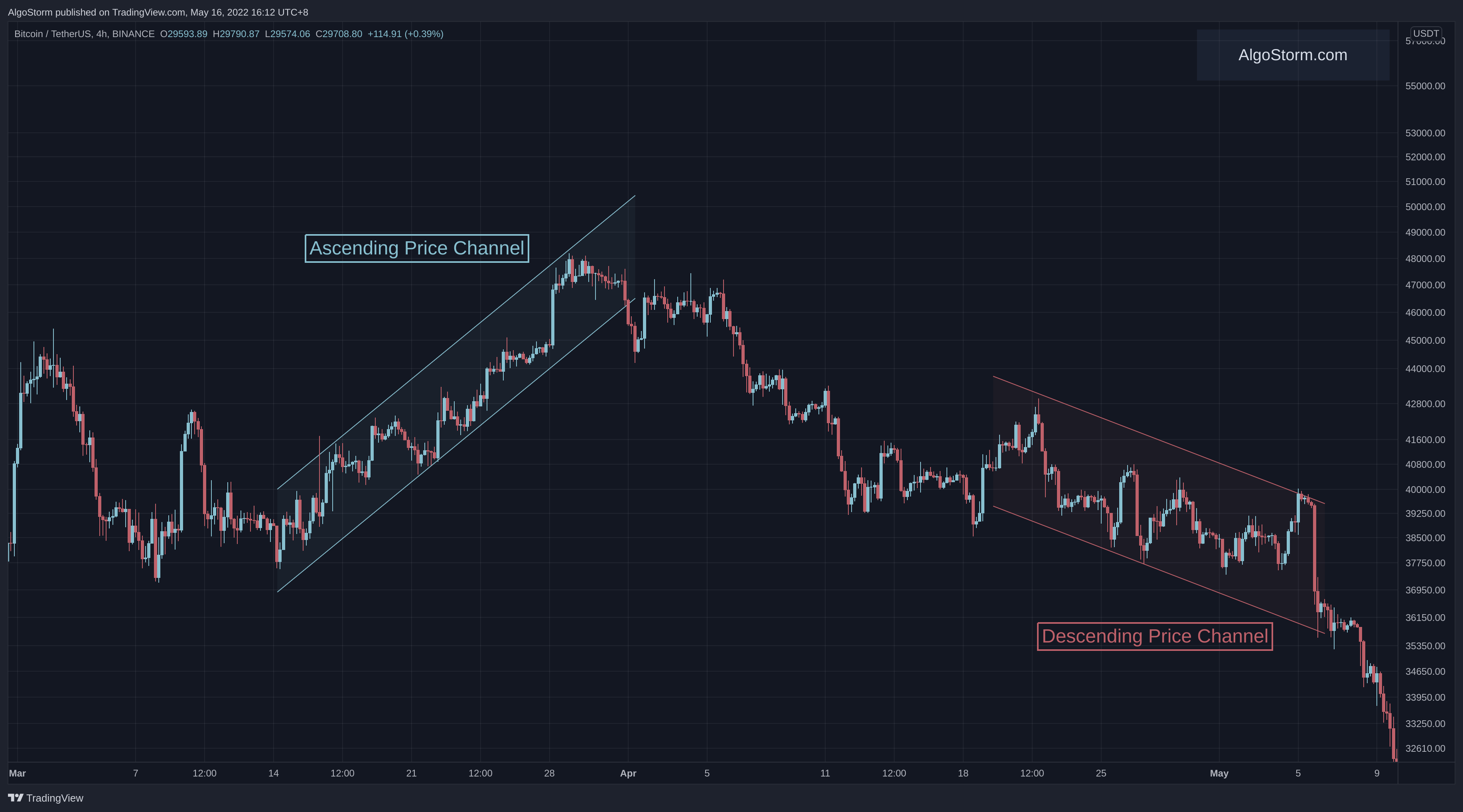Introduction to Price Channels
A price channel is a vital concept in technical analysis, representing a range within which a security’s price oscillates. It is formed by two parallel lines that encapsulate the price movement of a security, providing insights into the trend’s direction, momentum, and potential breakouts.
Illustration Of Price Channel:

Key Points to Note:
- Types of Channels: Price channels can be horizontal, ascending, or descending, reflecting the trend’s direction.
- Breakout Identification: They are instrumental in spotting breakouts when the price breaches the channel’s boundaries.
- Trading Strategy: Traders often sell at the upper trendline and buy at the lower trendline within the channel.
What Is a Price Channel?
A price channel appears on a chart when a security’s price becomes bounded between two parallel lines. These lines are drawn based on the price pivots, and their slope determines the channel’s direction.
Types of Price Channels:
- Horizontal Channel: Indicates a sideways trend where the price is moving within a constant range.
- Ascending Channel: Characterized by upward-sloping trendlines, reflecting a bullish trend.
- Descending Channel: Defined by downward-sloping trendlines, indicating a bearish trend.
Price channels are versatile tools used by traders to gauge the momentum and direction of a security’s price action and to identify potential trading opportunities.
Understanding a Price Channel
A price channel is more than just a pattern on a chart; it’s a reflection of the underlying market dynamics, including supply and demand. The formation of a price channel can be influenced by various factors and can occur across different time frames and instruments.
How a Price Channel Forms:
- Supply and Demand Forces: The interplay between supply and demand creates highs and lows that can be connected by parallel lines.
- Trendline Drawing: The lower trendline is drawn when the price pivots higher, and the upper trendline is drawn when the price pivots lower.
- Direction Determination: The slope of the trendlines indicates whether the channel is ascending, descending, or horizontal.
- Support and Resistance: The channel’s lines represent support (lower line) and resistance (upper line), providing valuable trading signals.
Price channels are valuable for identifying breakouts and for trading within the channel, offering multiple strategies for different market conditions.
Price Channel Analysis: Strategies and Insights
Analyzing price channels can lead to profitable trading strategies. Whether in an uptrend or downtrend, understanding the channel’s boundaries and potential breakouts can guide investment decisions.
Strategies for Different Trends:
Uptrend (Ascending Channel):
- Buying Strategy: Buy at the lower bound, anticipating a price rise.
- Selling Strategy: Sell or take a short position at the upper bound if the price is likely to remain within the channel.
- Breakout Watch: Hold positions at the upward bound in anticipation of a breakout, leading to a price surge.
Downtrend (Descending Channel):
- Shorting Strategy: Short the stock at the upper bound, deepening the short position if a breakout is confirmed.
- Contrarian Approach: Take long positions from the lower bound, expecting the price to adhere to the channel and head back up.
Benefits of Price Channel Analysis:
- Clear Entry and Exit Points: The channel’s boundaries provide clear signals for buying and selling.
- Risk Management: Understanding the channel helps in placing stop-loss orders and managing risk.
- Versatility: Applicable to various instruments, including stocks, ETFs, futures, and mutual funds.
- Breakout Prediction: Identifying breakouts early can lead to significant gains.
Conclusion: The Power of Price Channels
Price channels are indispensable tools in the arsenal of technical traders. By understanding the nature of a price channel, whether it’s ascending, descending, or horizontal, traders can devise strategies that align with the market’s direction and momentum.
The ability to identify breakouts and trade within the channel’s boundaries offers flexibility and potential profitability. However, like all technical tools, price channels should be used in conjunction with other indicators and analysis methods to enhance accuracy and reduce risks.